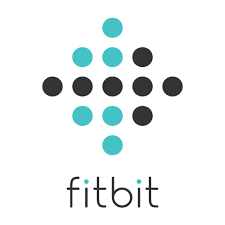How to make gains the Natural Way Going the natural route will help you achieve sustainable, long-term results, while keeping your body healthy and strong. To get you started, we’ll focus on a combination of:
- Progressive strength training to build muscle and strength.
- Nutrition to fuel muscle growth, aid recovery, and optimize performance.
- Natural supplements that can enhance results.
- Rest and recovery to ensure your muscles have time to grow and repair.
Table of Contents
1. Strength Training Plan
The key to building muscle naturally is progressive overload—constantly increasing the weight, reps, or intensity in your workouts to force your muscles to grow.
Here’s a solid 4-day training split that balances compound movements and isolation exercises:
Day 1: Upper Body Push (Chest, Shoulders, Triceps)
- Bench Press – 4 sets of 8-10 reps
- Overhead Shoulder Press – 4 sets of 8-10 reps
- Incline Dumbbell Press – 3 sets of 10-12 reps
- Lateral Raises – 3 sets of 12-15 reps
- Tricep Dips – 3 sets of 10-12 reps
Day 2: Lower Body (Legs, Glutes)
- Back Squats – 4 sets of 8-10 reps
- Deadlifts – 3 sets of 6-8 reps
- Leg Press – 3 sets of 10-12 reps
- Walking Lunges – 3 sets of 10 reps per leg
- Calf Raises – 4 sets of 15-20 reps
Day 3: Upper Body Pull (Back, Biceps)
- Pull-Ups (or Lat Pulldown) – 4 sets of 8-10 reps
- Barbell Rows – 4 sets of 8-10 reps
- Dumbbell Rows – 3 sets of 10-12 reps
- Face Pulls – 3 sets of 12-15 reps
- Bicep Curls – 3 sets of 10-12 reps
Day 4: Full Body + Core
- Deadlifts (Focus on power) – 4 sets of 6-8 reps
- Front Squats – 4 sets of 8-10 reps
- Plank – 3 sets of 1-minute holds
- Russian Twists – 3 sets of 20 reps per side
- Leg Raises – 3 sets of 15 reps
Progression: Every 1-2 weeks, try to increase the weight you’re lifting or the number of reps, even if it’s by a small amount. This forces muscle growth and strength gains.
2. Nutrition for Muscle Growth
Your diet is key to making progress in the gym. You need to eat enough calories to support muscle growth, with a focus on protein for muscle repair.
Caloric Intake:
To build muscle, you need to be in a slight caloric surplus (eat more than you burn). Use an online calorie calculator to determine your Total Daily Energy Expenditure (TDEE) and aim to eat about 300-500 calories above that.
Macronutrient Breakdown:
- Protein: Aim for 1.0 to 1.2 grams of protein per pound of body weight to support muscle repair and growth.
- Carbohydrates: Focus on complex carbs (brown rice, oats, sweet potatoes) for energy. About 40-50% of your daily intake should come from carbs.
- Fats: Healthy fats (avocados, nuts, olive oil) should make up around 20-30% of your total daily intake.
Sample Daily Meal Plan:
- Meal 1: Breakfast
- 4 scrambled eggs
- Oatmeal with berries
- A slice of whole grain toast
- Meal 2: Post-Workout Shake
- Protein powder (whey or plant-based)
- A banana
- Almond milk
- Meal 3: Lunch
- Grilled chicken breast
- Brown rice
- Steamed broccoli
- Meal 4: Snack
- Greek yogurt
- A handful of mixed nuts
- Meal 5: Dinner
- Salmon or lean beef
- Sweet potato
- Mixed vegetables
3. Natural Supplements
While food should be your main source of nutrition, these supplements can give you a natural boost:
- Whey Protein: Helps you hit your protein goals and supports muscle recovery.
- Creatine Monohydrate: Proven to enhance strength and muscle growth. 5g per day is a standard dose.
- Branched-Chain Amino Acids (BCAAs): Can help reduce muscle soreness and improve recovery.
- Omega-3s (Fish Oil): Anti-inflammatory, supports heart health, and helps with muscle recovery.
- Multivitamin: To cover any potential nutrient gaps.
4. Rest and Recovery
Muscles grow during rest, not during the workout. So make sure you’re giving your body time to recover.
- Sleep: Aim for 7-9 hours of quality sleep each night to allow your body to repair and grow.
- Rest Days: Take at least one full rest day per week, or engage in light activity like walking or yoga to allow your muscles to recover.
- Stretching/Foam Rolling: After your workouts, stretch and use a foam roller to prevent stiffness and improve flexibility.
5. Patience and Consistency
Building muscle naturally takes time, but consistency is key. Stick with your training program and nutrition plan, and you’ll start seeing results in 8-12 weeks.
Keep track of your progress by:
- Tracking your lifts (weight, reps) to ensure you’re progressing.
- Taking progress photos to visually monitor changes in your physique.
- Measuring your body (waist, arms, chest, legs) every 2-4 weeks.
Final Thoughts
The natural way might not offer the instant results of steroids, but it’s a healthier, sustainable approach that allows you to build real strength and muscle over time. By combining progressive strength training with proper nutrition, supplements, and recovery, you can achieve your fitness goals while protecting your health.






